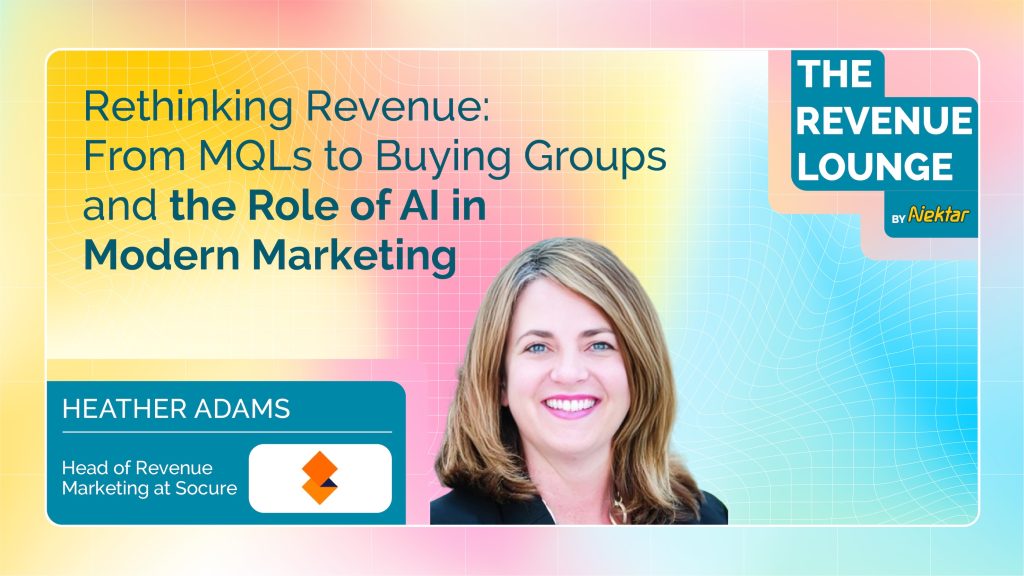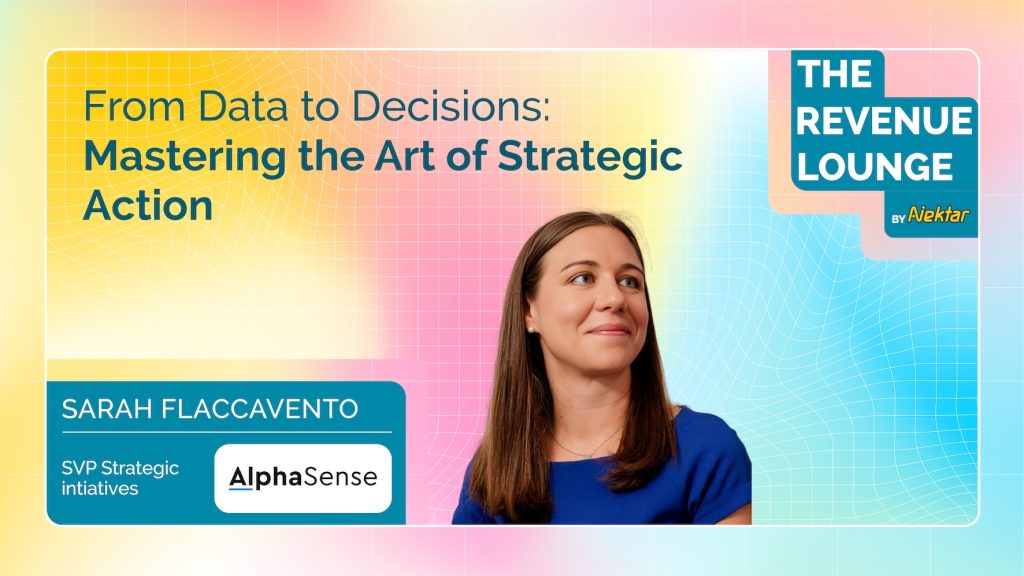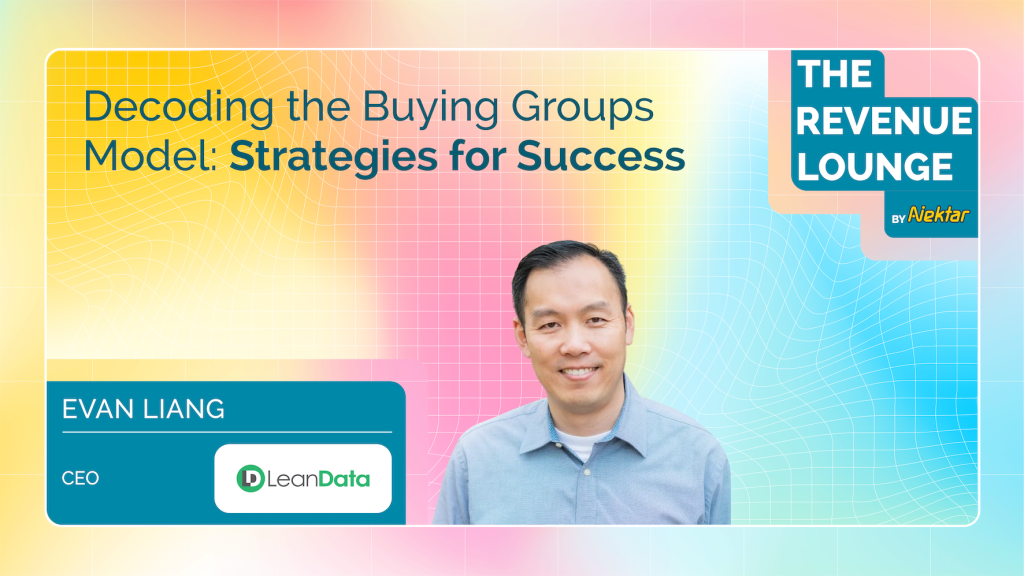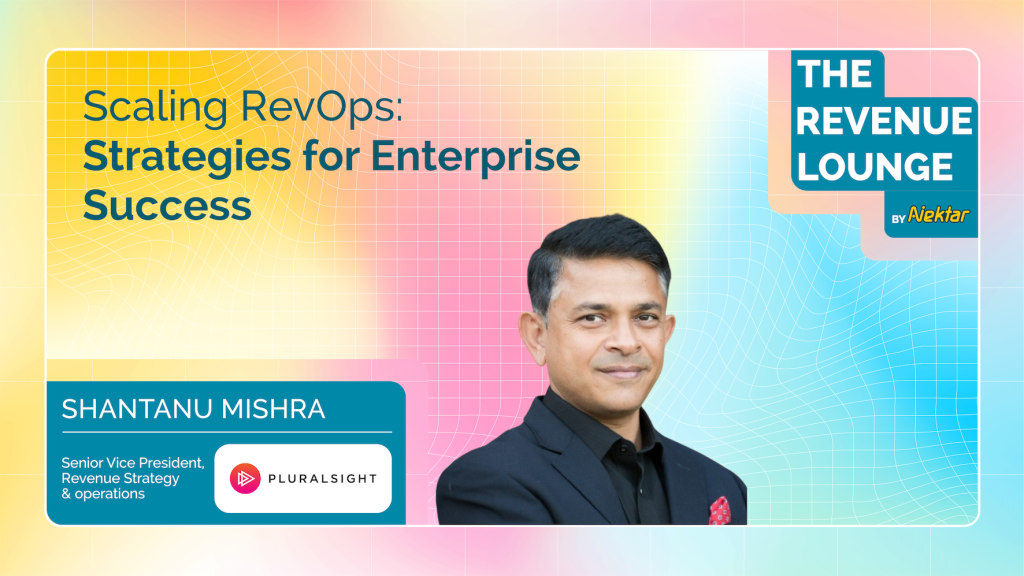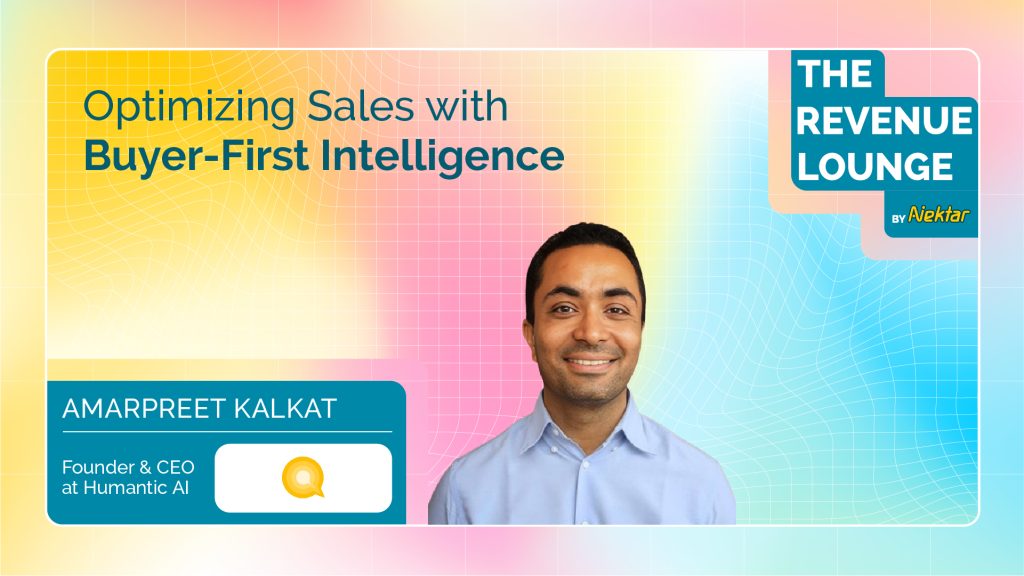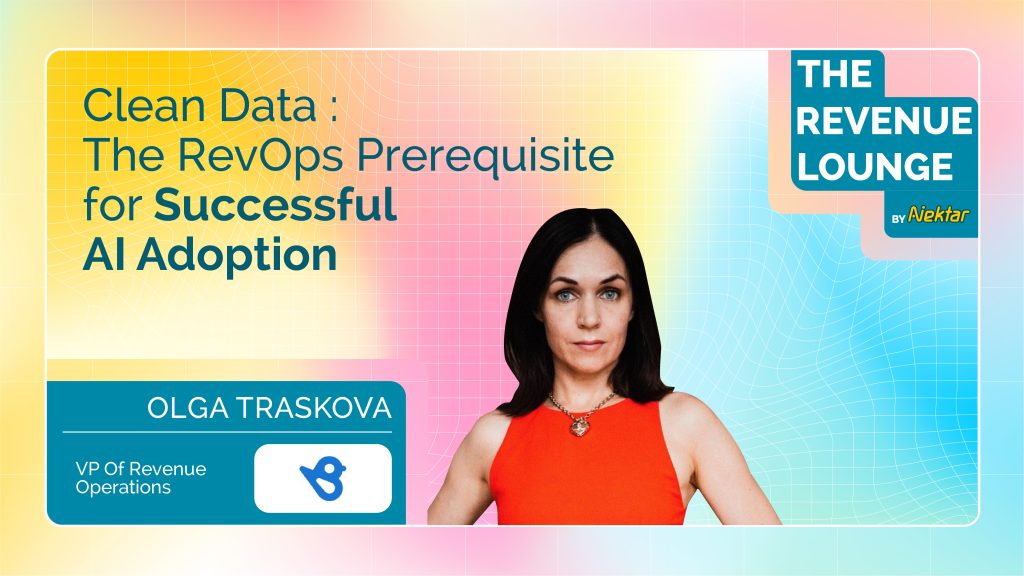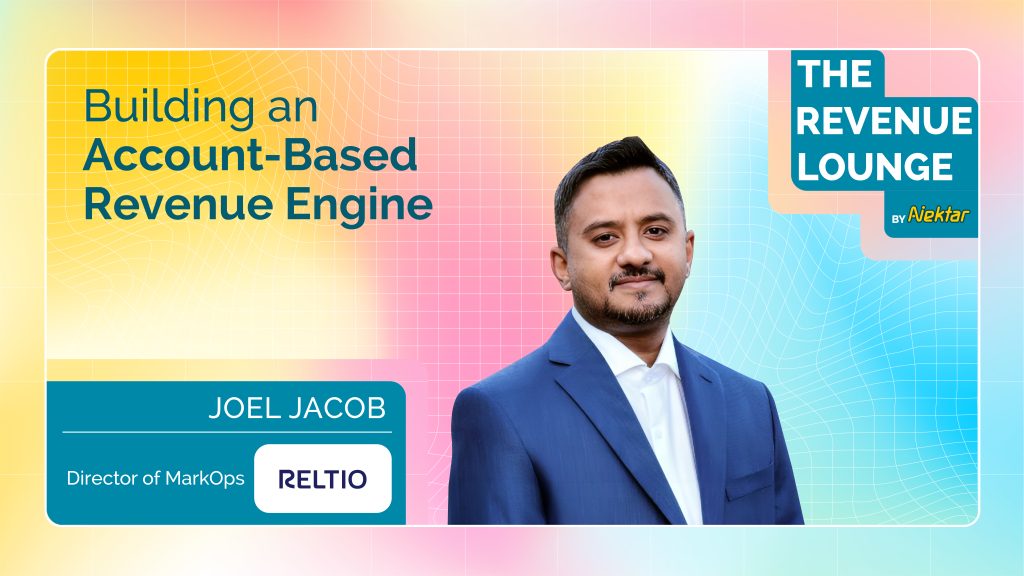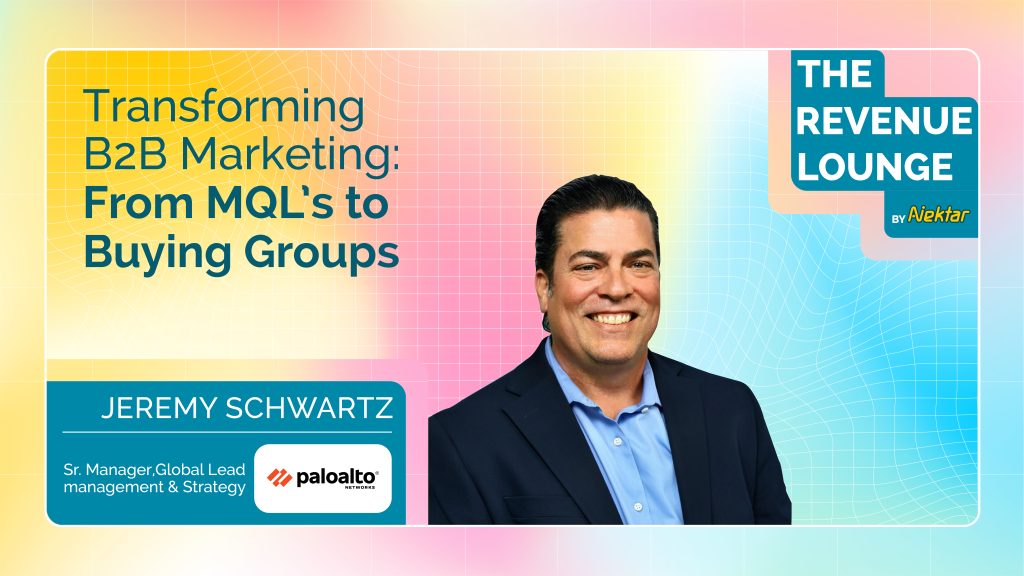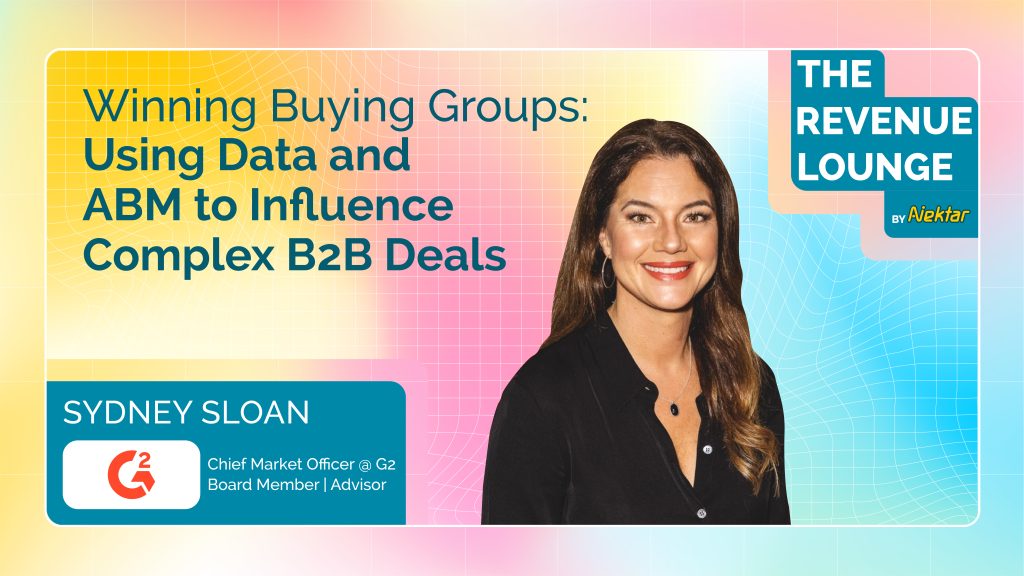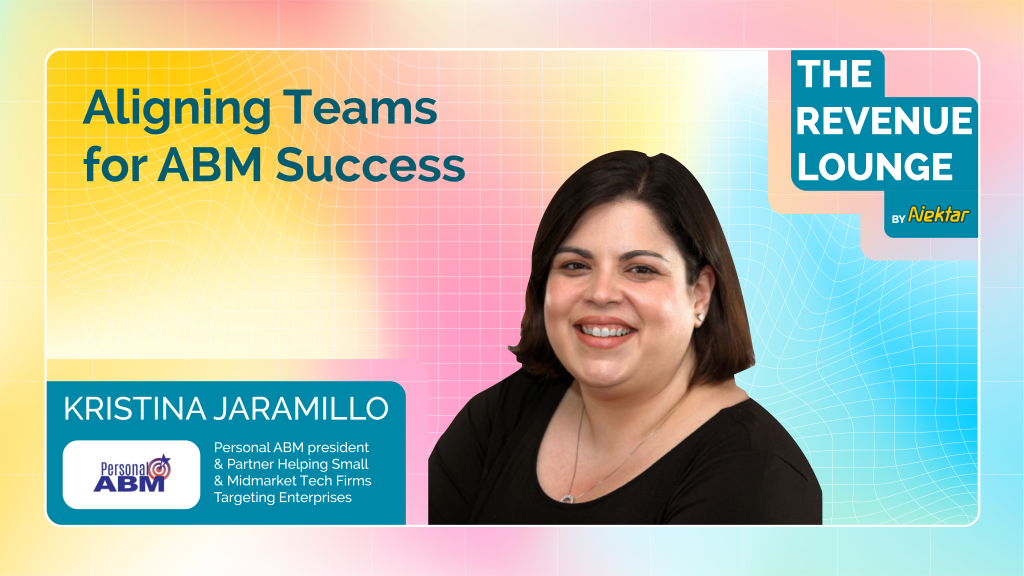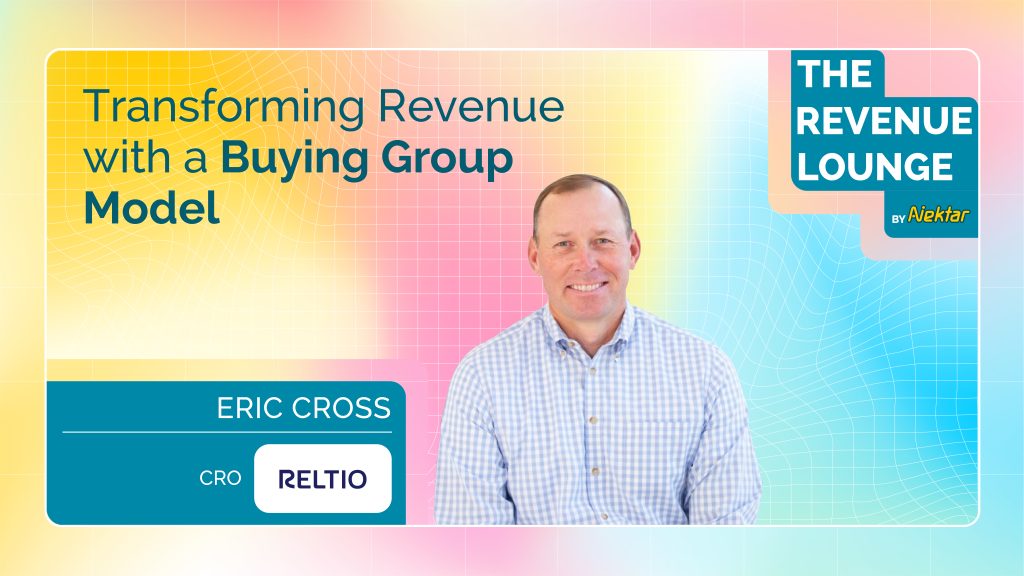From MQLs to Buying Groups: How Socure is Building the Future of Revenue Marketing
From MQLs to Buying Groups: How Socure is Building the Future of Revenue Marketing A conversation with Heather Adams, Head of Revenue Marketing at Socure. In today’s B2B landscape, the way companies buy has changed dramatically. But many revenue teams are still stuck using outdated tactics. The classic MQL (Marketing Qualified Lead) model is no longer fit for purpose. It focuses on individuals, when buying decisions now happen in groups. It relies on form fills, while buyers prefer stealthy research. It counts leads, when what matters is engagement across an entire account. “A single-threaded, one-person conversion is not what you should base your future revenue success on.” — Heather Adams In this blog, we unpack Heather Adams’ playbook for replacing MQLs with a buyer group-first strategy at Socure. It’s a journey that includes tight sales-marketing alignment, AI-powered personalization, and a deep commitment to clean, actionable data. Facebook Twitter Youtube Why MQLs No Longer Work MQLs were once a breakthrough. They gave marketing a way to track conversions, measure impact, and hand off leads to sales. But in the modern enterprise deal cycle, they often miss the mark. Key Limitations of MQLs: Too Narrow: Often capture one person’s interest, not the whole buying committee. Reliant on Form Fills: Many buyers now avoid forms entirely. Misleading Signals: Early research from junior roles gets mistaken for high-intent activity. “We knew we had 10–15 people involved in a six or seven-figure decision. We needed to engage the whole group—not just whoever downloaded the whitepaper.” Socure realized that chasing MQLs was like trying to understand a forest by examining one leaf. It doesn’t work when the real value lies in the entire ecosystem. Introducing a Buyer Group-First Strategy Instead of measuring success by individual actions, Heather’s team shifted to tracking account-level engagement and buyer group coverage. That meant aligning across functions and changing the KPIs they reported on. The Cadence That Changed Everything At the heart of the shift is a weekly sync between: Campaign leader Market Development Rep (MDR) Account Executive (AE) Each team member brings insights to the table, driven by: First-party engagement data Third-party intent signals Buyer group activity “When we meet, we ask: What are the tasks for the AE, the MDR, and marketing? What was successful last week? What do we try next?” This regular collaboration removed silos and drove accountability. Old vs. New Metrics Traditional Metrics Modern Metrics MQL volume Account engagement Form fills Buyer group coverage Single touch attribution Pipeline influence by persona https://www.youtube.com/watch?v=8Eu1xXIcY3c Redefining Success Metrics Heather’s team moved away from individual attribution and started tracking: Account-level engagement scores Persona coverage within buying groups Pipeline impact across functions “We built dashboards to show where our buyer group coverage is strong and where it’s lacking. It helps us spot gaps and optimize outreach.” They also eliminated credit-seeking by creating a combined GTM pipeline metric presented to executive leadership and the board. Getting Sales on Board Changing KPIs is one thing. Changing minds is another. Heather emphasized the importance of trust and early wins. “We had a few AEs who leaned in early. When they saw results, others followed. Success breeds success.” Rather than waiting for sales to add contacts to Salesforce, marketing and MDRs built a draft buyer group for each target account. Sales only needed to review and refine—a low-lift ask that accelerated adoption. The Role of Technology and Data Heather’s stack includes: 6sense for buyer intent and keyword tracking Drift for ABM-focused chatbot experiences Champion tracking tech to re-engage known contacts in new roles Custom GPTs to scale personalization across verticals and personas But tech alone wasn’t enough. Data quality had to improve. “Our data was everywhere—Slack, Salesforce, Clari, GDrive. We had to build pipes, clean the data, and use AI to make sense of it.” Infographic: The Buyer Group Engine A visual of inputs (intent signals, past champions, firmographics) flowing into tools (6sense, Drift, GPTs), leading to outputs (personalized engagement, buyer group completeness, pipeline growth). Early Results and Wins With the new model, Socure saw: 2.5x YoY lift in sourced deal quality 80% of pipeline from named accounts Increased deal size and strategic fit They also moved to 100% AI-assisted personalization at scale, saving time and boosting message relevance. “We’re using our AI agents to identify lookalike accounts, research stakeholders, and draft persona-specific messaging. It’s a huge unlock.” AI: The Personalization Force Multiplier Heather’s team is using AI for: Prompt optimization Buyer group discovery Personalization at scale Intent-to-outreach orchestration “The only limitation is how well you prompt. Sometimes we use AI to help us write better prompts.” They’re currently building agentic workflows that connect flows from Slack to Salesforce to outreach platforms, enabling near-autonomous buyer group engagement. Advice for Revenue Leaders For those looking to champion a similar shift, Heather’s advice is simple: Start with trust: “Build real relationships with your sales team.” Show data: “Sellers know MQLs don’t work. Bring the evidence.” Make it easy: “Bring the first version of the buyer group to the table.” Think in systems: “Map engagement across teams, not in silos.” Conclusion: The Future of Revenue Marketing The era of MQLs is ending. In its place, a more holistic, buyer-aligned, AI-powered strategy is taking hold. At Socure, Heather Adams and her team are showing what’s possible when marketing evolves from lead generation to buyer group orchestration. This isn’t a cosmetic change. It’s a fundamental reinvention of how pipeline is created, measured, and accelerated. TL;DR: Heather’s Buyer Group Framework Weekly syncs across GTM roles Account and persona-level metrics Tech-powered orchestration with 6sense, Drift, and AI Clean, centralized data across sources Cross-functional trust and transparency “If we don’t figure this out quickly, we’re going to get left behind.” Want to hear more stories from revenue leaders? Subscribe to The Revenue Lounge podcast to never miss an episode! More Resources
